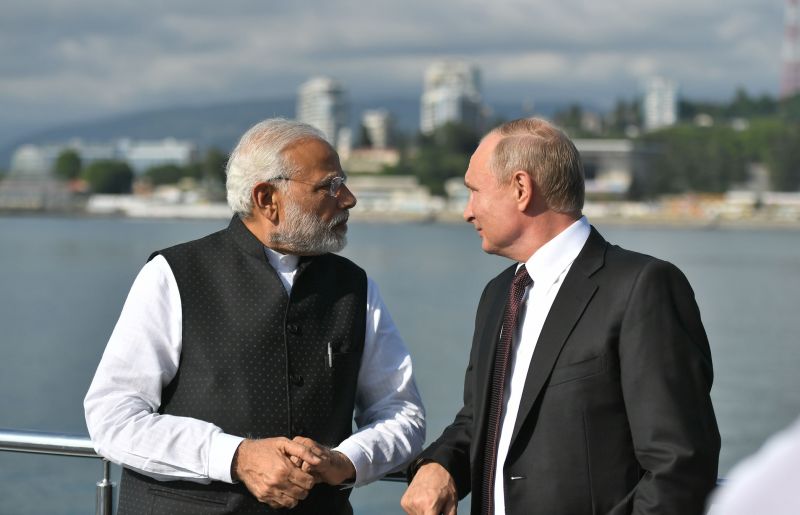US distrust Indian defence technology security protocol
By Rohit Srivastava

In spite of sharing strategic relationship and multiple multi-billion dollar defence purchase deals, India and the United States have failed to come up with any co-production or co-development programme in the defence sector. Considered as one of the major failures of Indian defence diplomacy, the two governments, till date, have failed to explain this.
But, finally, the answer is out. And the culprit is the Indo-Russian defence cooperation.
Answering a question on technology cooperation with India, a senior US official, in a background briefing, on Thursday said, “When we’re looking at defence technology and we’re looking at unique technology that is either developed in the United States or we’ve co-developed with other partners, we don’t want it stolen and we don’t want it exploited.”
“We don’t want it exposed because some Russians walking the shop floor decide to go walk away and put it in their handbag or knapsack and take it back to Moscow.”
“We are not going to allow that,” official added.
According to the official text of the briefing, the US is pushing India to tighten up its procurement, defence technology security processes and protocols which is required for more closer partnership. The US wants India to mature its defence domain.
“What we are being very clear about, what Secretary Pompeo has been very clear about on the road, is don’t get cute with CAATSA. So just because you have some old sustainment lines, don’t think that you can then go acquire a significant system like an S-400 or Su-35 and be like, “Hey, doesn’t really count because we have some earlier sustainment lines that predate 2017,” the official said.
Speaking on their expectations from India in this regards, the official said, “So for India, yes, there’s opportunity, but they have got to address their protocols and their processes on protecting defence technology and procurement processes.”
As reported earlier, India, since last September, signed multiple deals with Russia for purchasing five regiments of S-400 long-range surface-to-air missiles for $5.5 billion, four advanced frigates for over $2 billion, 200 Ka-226T helicopters for $1billion, 7.5 lakh AK-203 assault rifles for around $2billion, 21 MiG-29 for less than a billion, 18 Su-30MKI for over a billion, 10 Ka-31 airborne early warning helicopters for half a billion dollars.
In addition to this, India is procuring large number ordnance for its Russian weapon system which includes anti-tank missiles and rocket artillery. India will also be paying $3 billion for the lease of next Akula Class nuclear attack (Chakra III) submarine. India has also approved purchase 464 T-90 tanks for around $2 billion.
On the other hand, India is planning to purchase ten more P8I long-range maritime reconnaissance and strike aircraft for over $3 billion. India already operates eight of these aircraft and has ordered for four more which are expected to arrive in two years time. India is also pursuing the purchase of 24 MH-60 Romeo multi-role naval helicopters with significant anti-submarine capabilities. These will be placed on Indian Naval Ships. This deal is worth over $ 2.5 billion.
During the Indian Prime Minister Narendra Modi visit to the US in 2017, US government gave its consent for sales of General Atomics Sea Guardian (Predator B), the naval version MQ-9 high altitude long endurance unmanned aerial vehicle. India is expected to purchase 30 of these UAVs for Indian Navy and Indian Army for $ 2.5 billion.
In July last year, India approved the purchase of the NASAMS II air defence system for securing Delhi from aerial threats. This is expected to spend one billion dollars to the US. India will pay another one billion for six additional Apache attack helicopters. India has already received first Apache of its 22 chopper order.
Once all of these deals are inked, Indian exchequers will be paying around $ 10 billion. This is just a few billions less than the combined cost of defence agreements signed between India and Russia since last October.
Given the state of purchase contract with the two nations, the US has no reason to distrust India which is making the distinction between two global rivals based on its requirement. Russia has been the sole provider of critical strategic technology to India.
On the other hand, the US is trying to punish India by bringing by threatening to implement Countering American Adversaries through Sanctions Act (CAATSA). A similar threat has jeopardized US relations with Turkey, a NATO ally.
The briefing gives an insight into the thinking of the US policymaker. In the US world view, there is no space for multi-polarity or equidistant relationship or consideration for the relationship between the two nations. Can India afford to surrender its relationship with Russia to please the US? Most certainly not. Is there a possibility for India to develop future technologies on its own or in cooperation with any other nation and the answer is yes. We must focus on emerging technologies and ensure our strategic independence.




